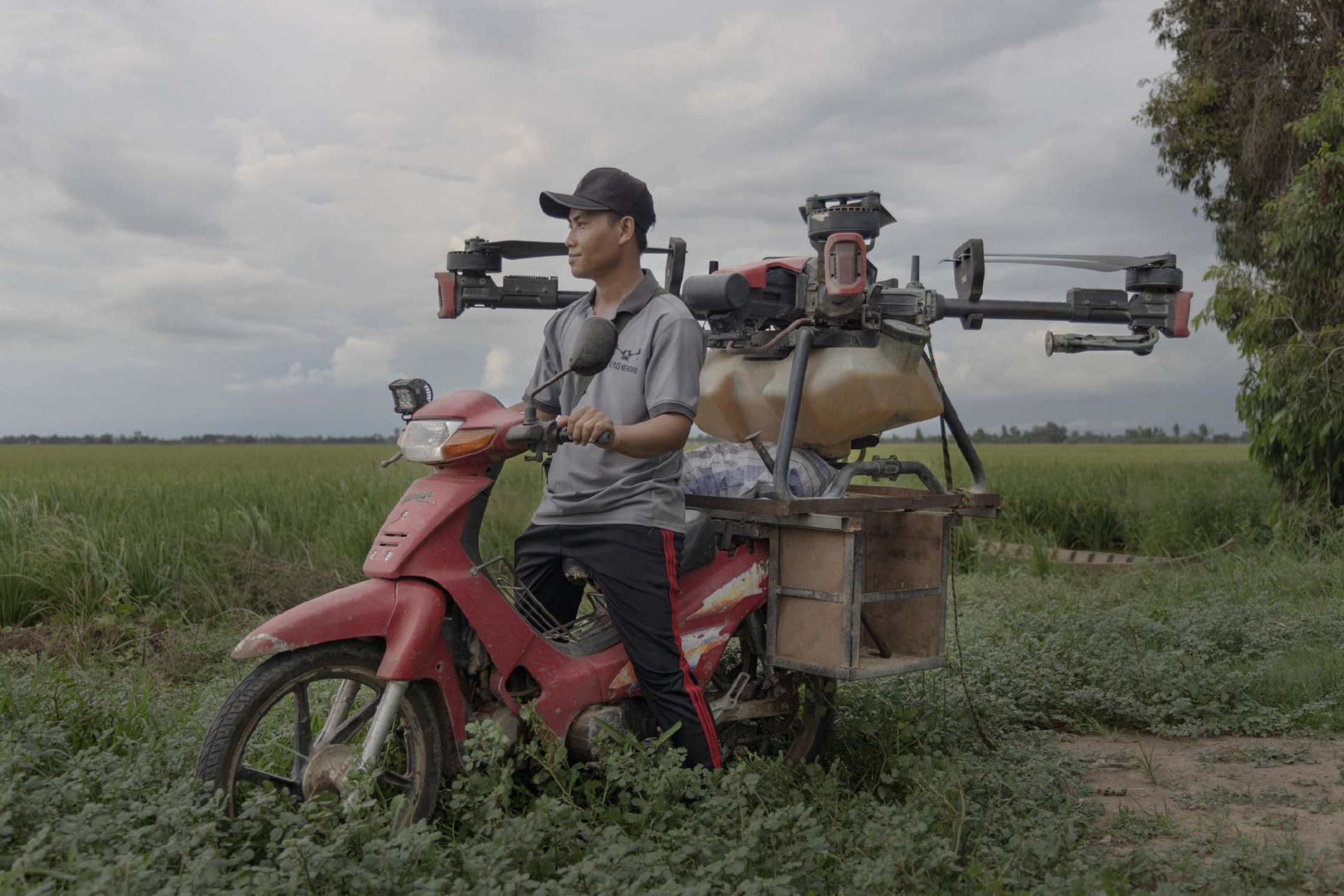One of the most persistent images of Vietnam is that of farmers in rice fields working by hand with their back bent and wearing conical woven hats to protect them from the sun or the rain. However, this traditional image is now being reshaped by a new reality brought on by the advancement in digital technologies. Today, along the lower Mekong River, rice fields are sometimes empty of people, instead
drones are flying over and working in the fields. Globally, rice is a key staple food for more than 3.5 billion people around the world. In the late 1980s, Vietnam emerged as one of the world’s largest rice producers thanks to a shift from commune-based public ownership to private holdings of rice fields, incentivizing farmers to increase their production. Fifty percent of the nation’s rice crop is now grown
in the delta of the Mekong River. Agricultural drones were first tested in the Tràm Chim area of the Mekong delta to prevent the pervasive risk that rice diseases pose for crops. In 2020, partly because of the COVID-19 pandemic, the usage of drones in the Mekong delta region ramped up significantly. Prompted by ads on social media during the lockdown, farmers started to research and think about buying drones or hiring a drone-pilot. During the pandemic, many young people left home because work in rice fields were
both unrewarding and tiring. Additionally, many young people decided to return home from the cities to be closer to their family and discovered the drone-pilot profession. Many saw this profession as an opportunity to leverage new technologies in farming and increase production, while eliminating the heavy physical strain. In 2021, agricultural drones equipped with AI were ocially introduced in the delta region, hoping to improve working conditions and limit the spread of rice diseases. The drones can be configured to scatter seed, spray pesticide, or spread fertilizer. The farmer or pilot first fills the drone with the right amount of material. Once the operator has set the parameters and mapped the field, they use a mobile phone application to control a machine that runs automatically and returns when the supply has run out. The machines help to cut the labour demands by at least 50% in managing crop production. Since drones can scatter the ideal concentration evenly over a precise area, farmers require less pesticide and fertilizer compared to manual application. This high level of precision in turn also reduces how much of the additives end up in the soil and are flushed into the river and out to the sea. However, there are also significant challenges to consider. While global demand for agricultural drones is projected to increase over the next few decades, climate change is compelling Asia to accelerate this transition. In addition, the Food and Agriculture Organization of the United Nations estimates that out of the 815 million people who are chronically hungry, 64% live in Asia. Therefore, global food production will need to increase by about 50% in the next quarter century to feed a projected population of 9 billion. Simultaneously, the basic resources for agricultural production, such as land and water, are becoming scarcer by the day, making the agriculture sector more vulnerable. Using drones to cut down on labour and supplies could help rice farming become more ecient, playing a role in food security.


















